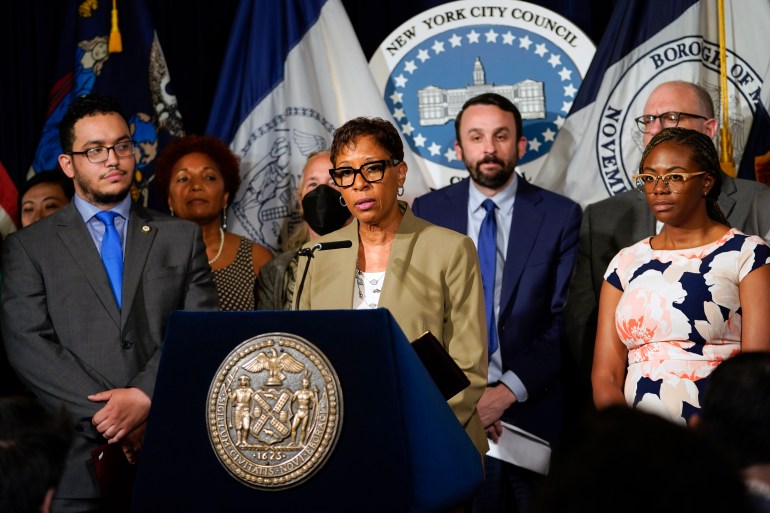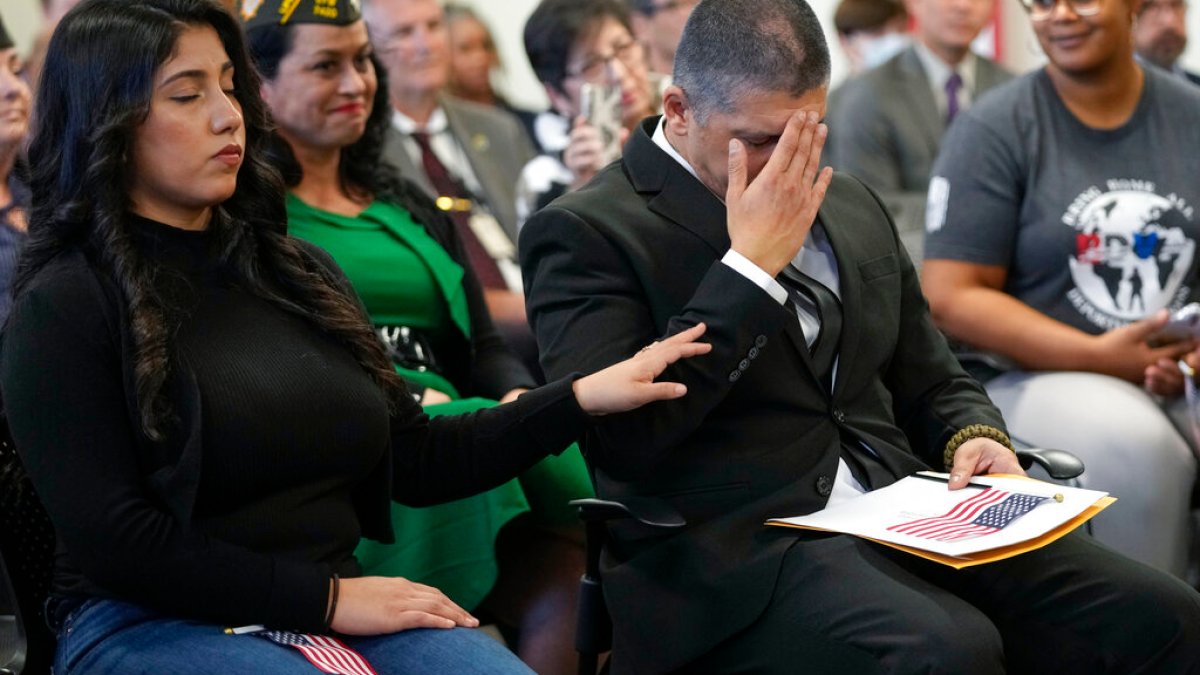Five ways the US Supreme Court reshaped policy in 2022 | Courts News
The year 2022 was, in some ways, the fulfillment of two distinct visions for the United States Supreme Court. Never has the court been so diverse and not in 90 years has it been so conservative.
Those shifts in the nation’s highest court have translated into critical decisions in the past year, changing the landscape in the US on issues such as gun rights, abortion and religious freedom.
The court began 2022 in the middle of its first full term with its new 6-3 conservative majority. The past five years had brought four new members onto the nine-person bench, including three appointed by former President Donald Trump, a Republican..
The result has been a slate of decisions that leaned decidedly right. According to data released in June 2022, the court tilted conservative more than 73 percent of the time in cases that were not otherwise unanimous, a rate only surpassed in 1931.
But with Democrats currently holding a majority in the Senate, US President Joe Biden was able to fulfill his campaign promise to appoint the first Black woman to the Supreme Court: Ketanji Brown Jackson.
All four of the recent appointees are under age 60, and with Supreme Court justices enjoying lifetime appointments, they are likely to shape rulings for decades to come.
Here are five issues the court tackled in 2022 – and why they matter for 2023 and beyond.
Striking down abortion as a constitutional right
If there was one case that defined the Supreme Court in 2022, it was Dobbs v Jackson Women’s Health Organisation, the case that upended nearly a half-century of precedent protecting abortion as a constitutional right.
It overturned Roe v Wade, a 1973 Supreme Court ruling that found that the US Constitution provides an unwritten right to privacy, which protects the right to an abortion. Roe has been a political flashpoint ever since the decision was delivered, with conservatives, many of them Republicans, setting their sights on striking it down.
During the 2016 presidential race, Trump promised to make overturning Roe a priority and promised to put “pro-life justices on the court”.
Abortion rights advocates have braced for a decision in the years since, and in May, a draft opinion leaked, showing that the Supreme Court’s majority planned to overturn Roe.
The leak itself was history-making: Justices on the right and left decried it as a breach of tradition, and an investigation is ongoing.
The Dobbs decision, released in June, put abortion rights in the hands of states. Thirteen had “trigger” laws, which automatically enacted abortion bans once Roe was repealed. Other states still had pre-Roe abortion bans written into their laws.
Many of those bans now face legal appeals, and some states, like Michigan and Kansas, voted to affirm abortion rights.
The Dobbs decision has had impacts beyond abortion too. In his concurring opinion, Justice Clarence Thomas called on the court to “reconsider all of this Court’s substantive due process precedents”, including the decision to legalise same-sex marriage.
In response, the US Congress passed the Respect for Marriage Act, offering federal protections for same-sex marriage in a remarkable show of bipartisan support for LGBTQ rights.

Expanding religious freedom
In a series of rulings this year, the court broadened the legal interpretation of religious freedom and bucked the longstanding norm of separating church and state.
At issue is the First Amendment of the US Constitution, which states that the government can neither prohibit the free exercise of religion nor promote the “establishment” of any religion.
Critics of the court’s decisions on religion in 2022 question whether that “establishment” clause will continue to serve as a wall between government and religion. Bloomberg’s Noah Feldman went so far as to call the principle “dead”.
In Kennedy v Bremerton School District, the conservative majority sided with a football coach at a public high school who had been suspended for praying on the football field after games. The court ruled his speech a private expression of devotion.
The same 6-3 majority in Carson v Makin decided that if the state of Maine offered vouchers to families to send their children to private schools, it could not refuse to provide the same funding for religious schools.
And in a Boston case, the court was unanimous in deciding that the city should allow a Christian flag to fly over city hall because it allows other groups to raise their own flags.
Going into 2023, the Supreme Court will once again broach the question of religious freedom in the case of a Colorado website designer seeking an exemption from the state’s anti-discrimination laws. She has argued that it would violate her right to religious freedom to be forced to design wedding websites for same-sex marriages.

Fewer limits to concealed weapons
Gun rights advocates scored a major victory in 2022 with a Supreme Court ruling in a case brought by the New York State Rifle and Pistol Association and two of its members.
They contested a New York law governing how the state issues “concealed carry” permits, which allow holders to carry hidden firearms in public.
In an estimated 43 states, officials are required to award “concealed carry” permits so long as applicants meet certain baseline requirements. But in six states, including New York, officials could use discretion in awarding the licenses.
Applicants in those six states had to show they had “proper cause” for wanting to have such a permit – a need that went beyond a general desire for self-protection.
The two men involved in the case had had their applications denied, so they sued, and the Supreme Court sided with them, citing the Second Amendment of the US Constitution, which protects the right “to keep and bear arms”.
“To confine the right to ‘bear’ arms to the home would nullify half of the Second Amendment’s operative protections,” the court’s conservative majority ruled.
The June ruling was issued a month after a mass shooting took place at an elementary school in Uvalde, Texas. The Biden administration denounced the decision, saying it “contradicts both common sense and the Constitution”. The administration continues to pursue a ban on semi-automatic assault weapons.
Defining black sites as state secrets
A March ruling that protected information about clandestine detention facilities known as “black sites”, showed internal fractures within the court.
Abu Zubaydah, a Saudi-born Palestinian, had sought to subpoena details about his treatment at the hands of the US Central Intelligence Agency (CIA) at a secret detention site in Poland – treatment that the European Court of Human Rights said “amounted to torture”.
Zubaydah, whose full name is Zayn Al-Abidin Muhammad Husayn, was one of the first to undergo the CIA’s “advanced interrogation techniques”, including waterboarding. The intelligence agency suspected Zubaydah was an al-Qaeda leader and later determined he was not.
Justice Stephen Breyer wrote the majority ruling that said any response to Zubaydah’s subpoenas will either confirm or deny the existence of a CIA facility in Poland and acknowledgement “falls within the scope of the state secrets privilege”.
But an unlikely pair of justices joined a full-throated dissent: conservative Neil Gorsuch and left-leaning Sonia Sotomayor.
They pointed out that “executive officials can sometimes be tempted to misuse claims of national security to shroud major abuses and even ordinary negligence from public view”. Books, movies and official reports had already acknowledged the existence of the black sites, they wrote.
“As embarrassing as these facts may be, there is no state secret here,” Gorsuch said in their shared opinion. “This Court’s duty is to the rule of law and the search for truth. We should not let shame obscure our vision.”
Negotiating the roles of government
In June, the court curtailed the ability of the US Environmental Protection Agency (EPA) to rein in carbon emissions, saying the agency had overstepped its authority.
The case pitted the EPA against states like coal-rich West Virginia as well as private energy and mining companies that had filed legal petitions to block a plan that would set emission reduction targets for the electrical grid.
The Supreme Court’s conservative majority ruled that the EPA needed more than a “plausible textual basis” in the law to justify its actions. Because the plan to curb emissions is a “major question”, the EPA needs “clear congressional authorisation” to set such limits, the court said.
In a dissenting opinion, liberal Justice Elena Kagan argued that Congress regularly delegates authority to agencies like the EPA and that, in making the ruling, the court was expanding its own powers.
“The Court today prevents congressionally authorized agency action to curb power plants’ carbon dioxide emissions,” Kagan wrote. “The Court appoints itself – instead of Congress or the expert agency – the decision maker on climate policy.”
As the Supreme Court looks towards the upcoming year, it stands to make more decisions that will shape the roles of government. One case concerns a petition from members of North Carolina’s legislature, asking to limit the state supreme court’s ability to weigh in on election-related matters.
The court’s decision in that case could shift the balance of power in state governments for years to come.




